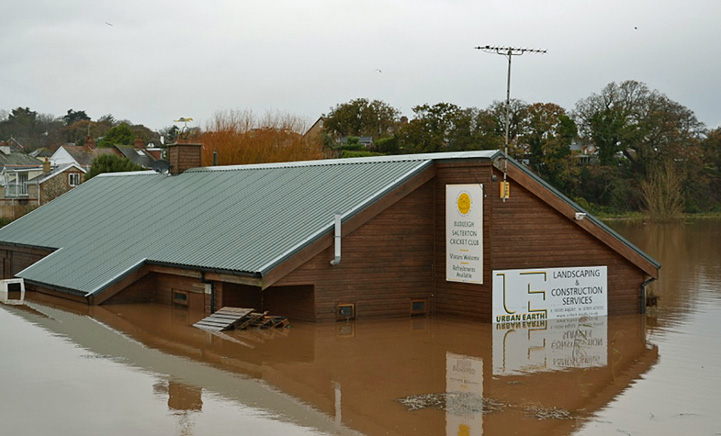It is hoped that the changes to the estuary will make it more ecologically healthy and adaptable
- In the UK, sea levels have risen 16cm since 1900 and are predicted to continue this trend.
- Although our coastlines and coastal communities have always been subject to change, global warming has accelerated both its speed and scale.
- This project created 55 hectares of rare inter-tidal habitats.

Budleigh Salterton Cricket Club
The historical records from Clinton Devon Estates inform us how the inter-tidal habitat of the Otter Estuary (East Devon), a designated Site of Special Scientific Interest (SSSI) was reduced in form over 200 years ago when Europe was in conflict, Britain was isolated and there were concerns about food supplies. Plans were drawn up to straighten the River Otter and add an earth embankment to prevent tidal inundation of the valley and create space for food production. The river was canalised, a road and bridge were constructed at right angles to the floodplain and an unprotected municipal tip site and cricket club were sited within the floodplain.
For many years, the River Otter has had no room to expand. Flood waters regularly get trapped behind the railway line, road and embankment and accumulate at the site of the current cricket club.
The Lower Otter Restoration Project is a partnership project between the EA and Clinton Devon Estates. It has taken ten years from conception to its completion in 2024 and was designed to adapt the Otter estuary to a more natural and ecologically healthy state, as well as achieving the following successes:
- Maintained and secured public footpaths, including the South West Coast Path across the new 70m Elizabeth Bridge
- Secured vehicle access to a community allied to Budleigh Salterton that was regularly cut off by flood waters
- Reconnected the river to its floodplain, allowing it to naturally flood and drain via the creation of 6km of creeks and a managed embankment breach
- Stabilised the refuse tip against further erosion
- Provided a more sustainable site and brand new clubhouse for Budleigh Salterton Cricket Club, setting it up for another 150 years
- Created 55 hectares of inter-tidal habitats (salt marsh and mudflats) with significant biodiversity benefits
- Worked with two tenant farmers to adjust their existing land uses and secure their livelihoods.
The project, which cost £27 million, received funding from four areas; the majority came from the EA, over £6.6 million was provided by the EU’s France (Channel) England Programmes as part of Project PACCo (Promoting Adaptation to Changing Coasts) (co-financed by the European Regional Development Fund), South West Water contributed over £1 million to upgrade the sewerage infrastructure and Clinton Devon Estates provided in-kind contributions by making 55 hectares of land available and supporting visitor infrastructure costs.
Of course, the scheme experienced some resistance; it changed a much-loved pastoral landscape to one that is estuarine in character and colour. Clinton Devon Estates has had to work hard to demonstrate the benefits to its agricultural tenants and the local community. While there are losses of farmland, Dr Sam Bridgewater of Clinton Devon Estates strongly believes that after at least five years, the habitats will be more natural for the location, more ecologically healthy and more adaptable to whatever climate changes may come.
Read the articles within Water: building resilience below.
.jpg)




